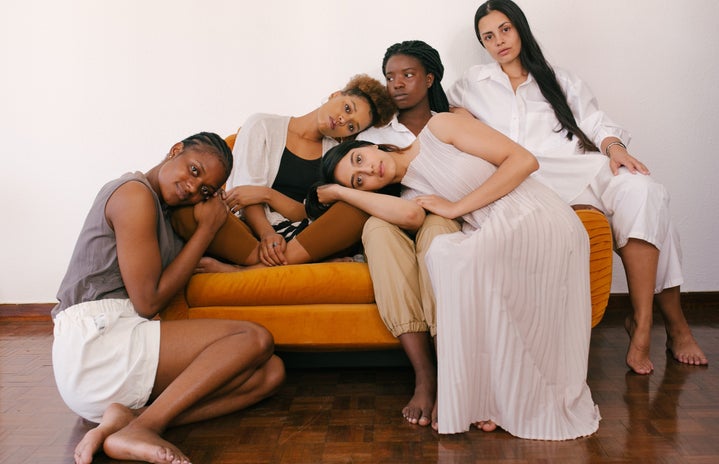*Content Warning: This story mentions rape and sexual assault.*
Womencore. The recurring hashtag has been surfacing on my TikTok’s For You Page recently, and it quickly pulled me away from the content I usually see on the app (which happens to revolve around Attack on Titan and Overwatch). In one sitting, I was bombarded by compilations of TV clips, interviews, live streams, art, and spoken word depicting women’s experiences within our modern society—both good and bad.
These videos offer a safe space for women to share their experiences, which in turn, spark important discussions surrounding misogyny, objectification, gender stereotypes, and more. While many of the clips were dark and unsettling, there were edits that took a more positive route by celebrating womanhood and empowering others to embrace themselves in the face of these struggles.
As I scrolled more through the hashtag, I noticed that one recurring theme was the pressure to fit into a beauty standard that sexualizes women’s bodies. To make matters worse, social media tends to exacerbate this issue, because we construct online personas to showcase a reality that doesn’t necessarily match our authentic selves. Young women are often thrown into a constant state of comparison between themselves and the beauty standard; it negatively impacts a person’s self-image, especially when social media can enable body shaming. These hegemonic ideals of beauty, which are primarily Eurocentric, keep reinforcing the notion that there’s something inherently wrong with how women look—that some sort of alteration must be made before anyone can feel “beautiful.”
To get a sense of just how many young women resonate with “womencore,” the video above reached 778.1K likes, 2.4K comments, and 82.4K saves on TikTok. This trend is steadily reaching more viewers, and the responses are overwhelmingly positive. Users are interacting with these videos by commenting that they feel tired of chasing after the “perfect body” when the beauty standards constantly change. The relentless push to appear young and beautiful is just one of the countless results of the patriarchy, and this hashtag is ensuring viewers understand this struggle.
To challenge beautification and anti-aging rhetoric, @charlie_has_sprung commented on @anarcho0o’s TikTok, “I want to look old when I’m old. I want my face to show I’ve lived a life. I want the deepest smile lines anyone’s ever seen. My face will tell a story.” The desire to break out of societal pressures and harmful ways of thinking is difficult when it’s seemingly all around us, but the more we discuss why we feel the need to match these standards, the more we can lift these burdens off of our shoulders.
While the videos offer a glimpse into the darker side of chasing after beauty, these videos still integrate empowering elements into their overarching messages. Most end in uplifting sentiments, such as encouraging women to embrace their natural beauty and ethnic features, because feeling comfortable in your own skin is the most prominent message that the trend expresses. I enjoyed watching so many of these celebratory videos, especially since the hashtag was accompanied by the tag “hopecore,” which features more inspiring themes and visuals.
There were so many hashtags ending in “core” on TikTok, so I curiously explored it further and found that these trends emerged from the original aesthetic movement called “corecore.” Set to somber, dramatic music, seemingly unrelated clips are stitched together to create visually appealing narratives covering a broad range of topics. Whether it be about the dangers of technology or the beauty of nature, the clips are constructed with great emotional care; it’s evident that the trend has a lot to say to its viewers. These posts could even be considered digital poetry in the way they interact with viewers in an emotional manner. From music to monologues to visceral imagery, the trend is bound to connect with audiences on some level.
It’s nice to come across thought-provoking content on TikTok, and it highlights how creators can reshape the app’s intended purpose into a space of relatability and connection. I admire how the trend delves into women’s realities, as these edits capture so many aspects of womanhood in such a short amount of time.
“Womencore” serves as a form of self-expression encompassing what it’s like to exist as a woman within a society built by and for men. While the content is difficult to watch at times, it’s a good step toward raising awareness and creating safe environments for women to discuss their personal experiences. Inspiring, welcoming, and emotional, this aesthetic trend does a great job of creating a call to action and uniting women together through digital media.
I’d love to see more content from this aesthetic trend, and I encourage everyone to take a look through “corecore” videos to see how creators use digital art to convey important messages about our society.


